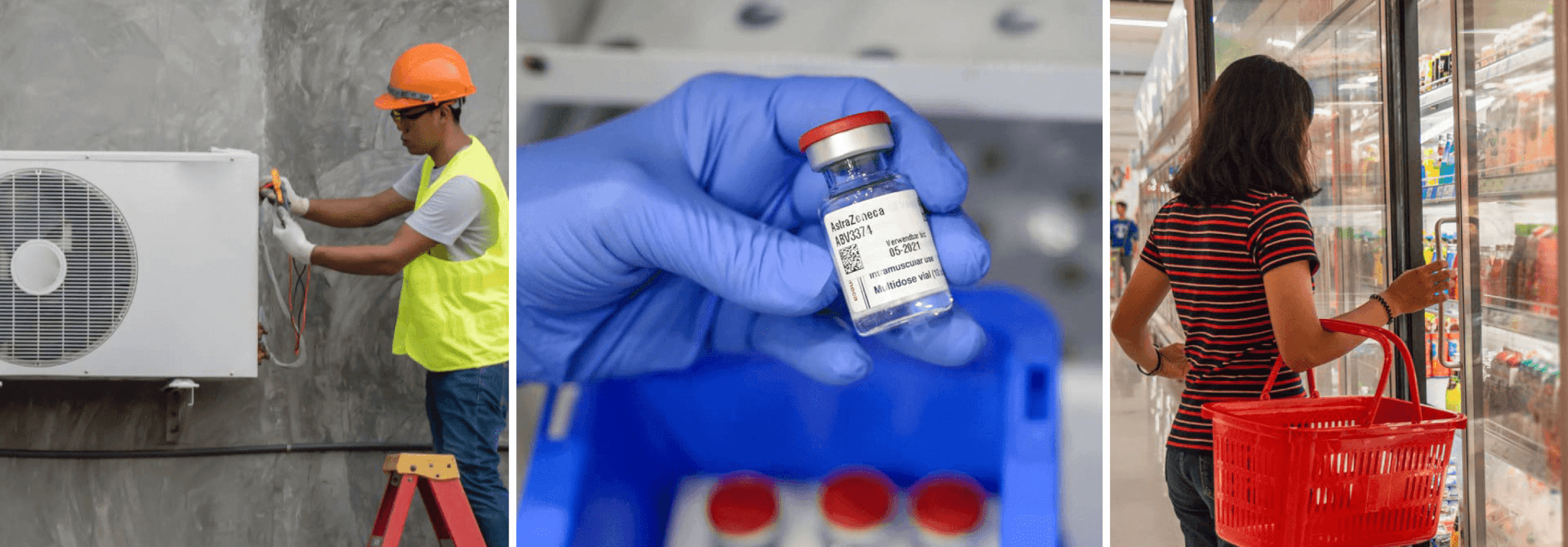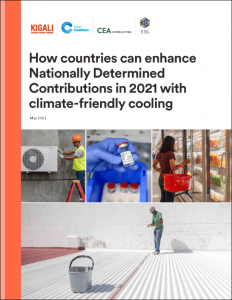
Though we’re not yet halfway through 2021, it’s already shaping up to be a banner year for tackling climate change – politically, financially, and socially. Any consumer taking in the tidal wave of climate news will be able to cite numerous examples of action and yet science demands more action to keep warming below 1.5° C. Thankfully more is coming.
One of the most critical goals to achieve in 2021 is an enhanced Paris Agreement, which means negotiating issues like carbon markets, finance, and reporting, but perhaps more significantly, updating Nationally Determined Contributions (NDCs) for climate mitigation and adaptation. NDCs are a fundamental component because they detail the targets, policies, and measures governments aim to implement over the next five years. Each country must submit an updated NDC to the UN by COP26 in November this year.
While most parties are still working on enhancing their plans, 81 countries (as of May 1) have already updated their NDCs or submitted entirely new ones. And to that we say ‘Bravo!’. Even more exciting (in our eyes) is an emerging trend that we’re seeing in these recently published NDCs, one that has huge mitigation potential. Currently, this mitigation potential is roughly 7% of global greenhouse gas (GHG) emissions, although this is expected to double by 2050 if left unchecked. Not only does this trend have the potential to avoid a sizable chuck of global emissions, it’s also critical for adapting to the warming climate and delivering multiple Sustainable Development Goals (SDGs) relating to health, nutrition, productivity, and education.

So, what is this trend? Well, it’s quite simply committing to the adoption of or transition to energy-efficient, climate-friendly cooling solutions. So far, 22 NDCs – representing 48 countries – have featured cooling commitments or reference to it, with at least seven countries signaling they will include action on climate-friendly cooling in their NDC when they go to print.
A new briefing paper from the Kigali Cooling Efficiency Program (K-CEP) summarizes the state of play and includes 10 case studies of published or planned NDC enhancements featuring climate-friendly cooling. This work is being done as part of K-CEP’s NDC Support Facility for Efficient, Climate-Friendly Cooling, which was set up to help developing countries that are committing to take action on cooling in support of the Paris Agreement. The brief goes on to give an overview of 45 additional countries (including the 27 members of the European Union) that have already included climate-friendly cooling in their enhanced NDCs in some form.
Government action on efficient, climate-friendly cooling
While most governments tend to focus on the supply side of the energy transition and shifting from fossil fuels to clean power, many of these 55 countries have recognized the need to also look through the other end of the telescope, managing energy demand as well as the use of refrigerants that have a high global warming potential (GWP). They have understood that energy supply is just a means to an end, not the end itself, and that it is the benefits we receive from energy, such as cooling, that matter. The more efficiently we can deliver these benefits in terms of energy supplied for benefits produced, the cheaper the cost of the energy transition will be and the quicker we can do it. The Economist Intelligence Unit recently quantified these cost and time reductions and estimated that efficient cooling (in appliances and buildings) can save $3.5 trillion by 2030 and take eight years off the transition to net zero.
Making our cooling more energy efficient can be achieved at the product level, like in air-conditioners (ACs) and refrigerators, or at the system level, such as buildings, cities, and grids. Enhanced NDC commitments on cooling reflect the different entry points for efficient cooling. For example, Nigeria, Morocco, Tunisia, and Pakistan will be focusing on more stringent Minimum Energy Performance Standards (MEPS) for ACs and refrigerators, while Cambodia, Vietnam, Burkina Faso, and Jordan will be upgrading their public buildings and cities. Alternatively, Ethiopia and Chile are focusing on industrial cooling.
In parallel with NDC enhancements, 118 countries and the European Union have now also ratified the Kigali Amendment to the Montreal Protocol, which aims to reduce the production and use of super-polluting hydrofluorocarbons (HFCs), 86% of which are accounted for in cooling equipment (in GWP-weighted tons CO2-eq terms). Better alignment of these two regimes (i.e., the Paris Agreement and the Kigali Amendment) will help countries to reduce emissions from cooling faster and more cost-effectively.
Cooling our warming world
As we ‘build back better’ we also need to ‘build back cooler’, ensuring that cooling equipment and appliances, as well as buildings, are net zero, and that the recovery from the Covid-19 pandemic also focuses on cooling our warming world. In doing so there are huge opportunities to address racial and social equity challenges by reducing the cost of cooling for low-income consumers, retrofitting buildings for comfort and health, and making public spaces ‘cool havens’ to provide respite from the heat waves that challenge our way of life more and more each year.
With the publication of the COP26 High Level Champions’ Climate Action Pathway to Net-zero Cooling, we know how to get to net-zero cooling – passive buildings, super-efficient equipment and appliances, and ultra-low (< 5) GWP refrigerants – but now we have to ensure the necessary actions are taken to get us there.
Of the 189 parties that have joined the Paris Agreement, the majority still need to submit enhanced NDCs by COP26 this November, and many need to ratify the Kigali Amendment.
Enhanced NDC commitments on cooling are an important step in the right direction on this sectoral pathway. The benefits are clear. Of the 189 parties that have joined the Paris Agreement, the majority still need to submit enhanced NDCs by COP26 this November, and many need to ratify the Kigali Amendment. Taking ambitious action on both fronts would provide a valuable opportunity to realize the full mitigation potential of energy-efficient, climate-friendly cooling.
The recent announcements from the U.S. and China – namely their Joint Statement Addressing the Climate Crisis (including the phasedown of HFCs), both countries’ decision to ratify the Kigali Amendment, and the United States’ enhanced NDC and American Innovation and Manufacturing (AIM) Act – has puts some serious wind under the wings of the Kigali Amendment, its significance in geopolitical terms, and what it means for the cooling industry overall. That said, more emphasis is needed on cooling more broadly, such as appliance efficiency standards. A renewed spotlight on the efficiency of cooling appliances, building design, and the HFC phasedown as a complete suite of critical climate solutions simply can’t come soon enough. Temperatures are rising and the clock is ticking for people and planet.
Further info
For more information on the importance of efficient, climate-friendly cooling for all or K-CEP, please visit www.k-cep.org.
Governments interested in enhancing their NDCs with action on climate-friendly cooling please email k-cep@climateworks.org.

